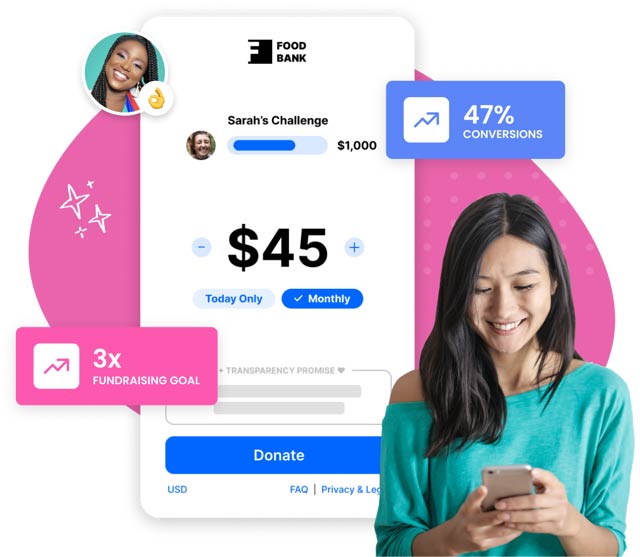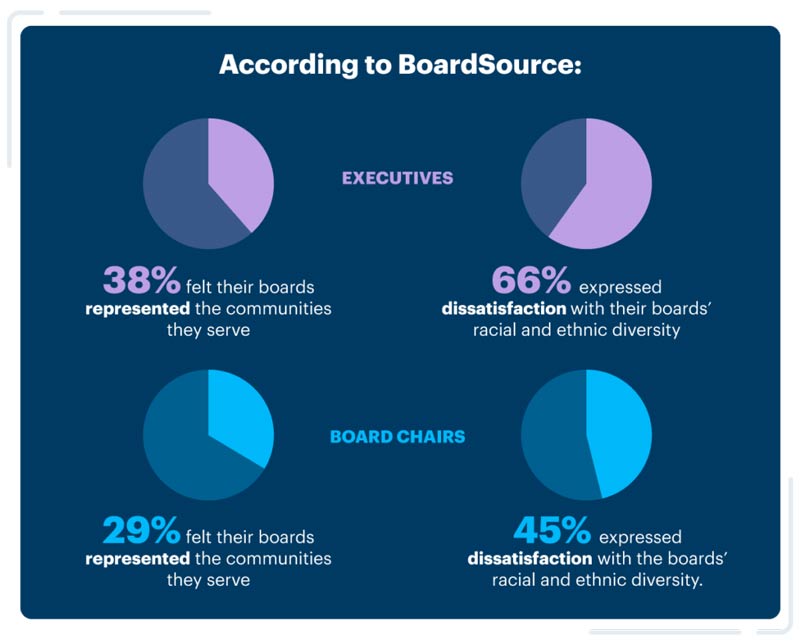Nonprofit Technology & Fundraising Blog
Subscribe to our mailing list

January 29, 2025 | Nonprofit Trends
There are so many reasons nonprofits lose access to once-reliable funding. Perhaps a major donor who consistently gave year after year needed to take care of their grandchild’s unexpected medical expenses. Perhaps a family foundation changed priorities, and your nonprofit is no longer eligible for its grants.
Whatever the reason, don’t panic, and remember that luck comes to the well-prepared. Here are five tips on how to diversify your fundraising portfolio so that when unexpected fundraising challenges arise, you’re not left in the lurch.
Take a look at all of your revenue-generating activities from the past year to get a real sense of how exactly your nonprofit generates income. You can get as granular as you like, but here are some big categories to consider to get started:
If any one of these categories disappeared or were put on hold indefinitely, what would happen? Would the rest of your revenue-generating activities be able to fill in the gaps? How much time is spent on each category, and is your effort paying off?
Visualizing this data, even with a simple pie chart, will help you see if you have a healthy range of revenue-generating activities or if you’re putting too many of your eggs in one basket.

DonorPerfect users: Want to save time by streamlining your online fundraising operations? Check out Givecloud and see how you can host exciting virtual events, create donor portals, and easily build an engaging giving website.
Not a DonorPerfect user? Book a free demo today!
Every nonprofit’s ideal situation will be different, so set aside some time at your next board meeting to discuss if/how you want to diversify your revenue streams and build a high-level strategy that will help you get there.
There’s so much power in numbers, and the benefits of regular recurring gifts cannot be overstated. With a large monthly giving community, you can have a reliable revenue stream that can handle some variation as individuals come and go as donors.
One-time donors have an average retention rate of 28.1 percent. But among DonorPerfect users, monthly givers have a retention rate of 74.6 percent! Some DonorPerfect users have reported recurring givers who stay with their organization for 20 years or more, making a monthly giving program ideal for any nonprofit interested in building a stable, loyal, and dedicated donor base.
By signing up for a recurring gift, these donors are essentially telling you that they’re interested in providing your mission with smart, sustainable support. They’re excellent candidates for planned gifts and should be considered as additions to your major giving pipeline.
Want to create a monthly giving program, but aren’t sure where to start? Check out DonorPerfect’s monthly giving success hub now!
Whether public or private, grants can offer comprehensive funding for entire programs, making them highly competitive and immensely rewarding when earned. But given the high level of competition, a successful grant application often requires impeccable attention to detail, a significant investment of time, and just enough creative flair to stand out.
If your attention is pulled in too many directions to give grant applications the focus they require, this is the perfect task to outsource. Depending on your budget, you could hire an in-house grant writer, hire a freelance writer as opportunities arise, or work closely with a particularly skilled volunteer who can do the bulk of the work and form entry, then call you in for proofing and editing.
If you decide to hire a pro, you’re more likely to win grants – according to Forbes, a solid grant writer has a win rate of around 60 percent, and an exceptional grant writer can secure roughly 80 percent of the grants for which they apply. But even trusting this task to a volunteer means you’re putting more applications out than you would be able to do on your own, increasing your odds of securing more funding for your mission.
Philanthropy is often altruistic but doesn’t always have to be. Does it make sense for your nonprofit to partner with local businesses? Now is the time to get creative. Who would benefit from publicity with your nonprofit? Try imagining win-win scenarios for your nonprofit and other businesses when creating corporate giving opportunities. Here are a few ideas to get started:
Of course, not all missions speak equally to all people, but there may be prospective donors out there who simply don’t know you exist because your marketing materials haven’t reached them. Does your donor base tend to skew a little older? Try creating giving opportunities that speak more to a younger audience, like online and monthly giving, to invite more new people into your community of supporters.
When you expand your idea of who and what a donor is, you’ll also expand your donor base to include more of your community. Take a look at your donor, volunteer, and general community demographics and see who might be missing from the table.

Where does your nonprofit stand regarding diversity, equity, and inclusion (DEI) work? Hear from expert voices in the social good sector on how your organization can implement DEI principles and lessons in fundraising.
Losing a major source of funding can be a stressful and turbulent time. By diversifying your fundraising activities and casting a wider net, you’ll be less reliant on specific donors and better able to adapt in unpredictable times. If you’re ready to learn how to harness time-saving virtual fundraising tools to raise more money and build a stronger community of supporters, check out Digital Fundraising Makeover for Nonprofits, available for free download below!
Follow us on social!